It seems that, as of late, Bushiroad has been printing new tools to push the game into a different direction compared to its late 2023 counterparts. While cards like Aki and Ainz ravaged the metagame, newer set designs hint towards a larger focus on resource generation and modality.

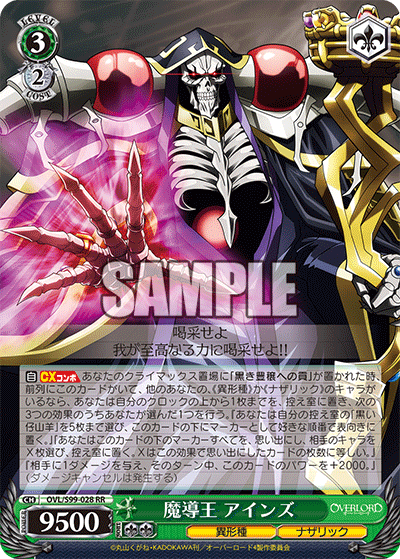
Towards the latter half of 2023, these two decks showed great prominence in competitive play. The two decks had two different styles of play: Aki was focused on having a very powerful finishing ability whereas Ainz was focused on slowing down the game and maintaining board presence.
Both of which created different issues for the game. Aki’s deck virtually required little to no resources from the player. The tricky part was getting events that supplemented his ability. Overlord dominated the field, wiping away an opponent’s field while being virtually untouchable outside of a few niche profiles. Regardless, both of which have been restricted in some capacity or another.

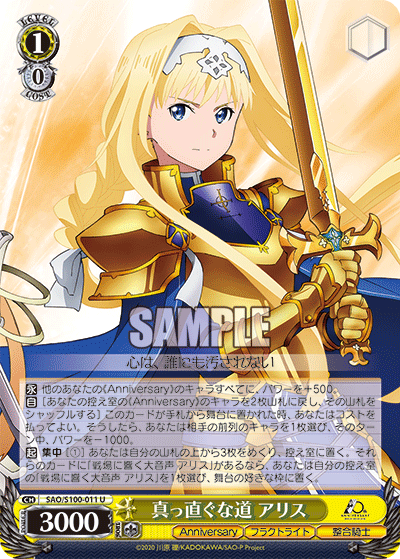
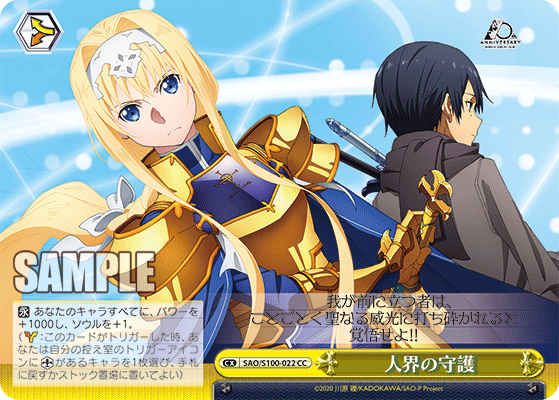
SAO/S100-011U 真っ直ぐな道 アリス (center)
SAO/S100-022CC 人界の守護 (right)
Now before we dig a little deeper at the meaning of this post’s title, let’s reflect a bit on an earlier menace to the format. Alice signified peak resource acquisition. The 1/0 brainstorm in the back would spawn the 2/1 Alice as early as the start of level one. And the many tools surrounding the deck made this task very consistent. Alice was a consistent combo piece which sat at 10500 power usually (assuming you only have one brainstorm in the back). The thing to note here is that Alice was also a combo piece. At level one, you would essentially have multiple 10500 cross-turn advantage engines that would refund and gain you resources that your opponent would have to deal with.
Alice as a 2/1 combo is perfectly fine in reference to any other combos of its kind. The main issue came with the problem where she could come out early, establishing both field dominance and resource gain. Most tools to deal with these sorts of designs (e.g. anti-change, Adachi) are rather expensive and difficult to pay/fetch for in the early game. However, if left unchecked, Alice would continually compile resources while locking out the opposing player.
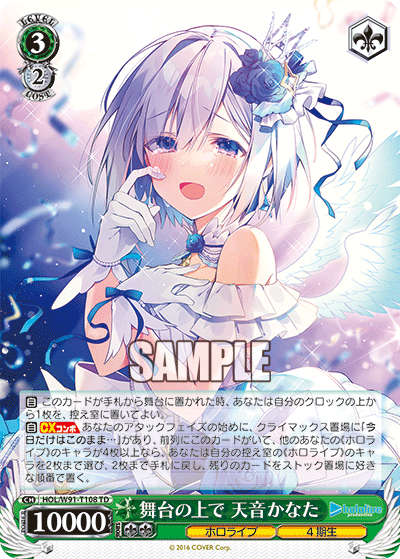
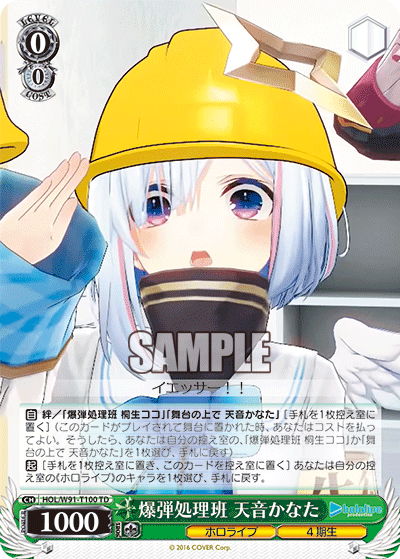
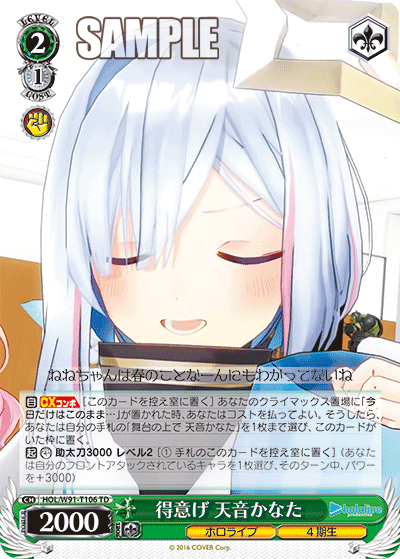
HOL/W91-T100TD 爆弾処理班 天音かなた (center)
HOL/W91-T106TD 得意げ 天音かなた (right)
So now that we’re past the preface, we can dive into the main part of this post. Kanata is an early play combo much like 2/1 Alice that is focused on resource generation. Now the biggest difference between Alice and Kanata is that Alice comes out at level one whereas Kanata would come out at level two. Now another stark difference with that of Kanata is that she also has a direct bonder that can also fetch its other combo target that provides the change into 3/2 Kanata. Kanata has been considered as an alternative version of the more traditional level one combo with some decks considering opting out of a level one combo entirely and playing two separate level three combos by using the many resources that Kanata herself can generate.


BAV/W112-004SP-SP 阿慈谷ヒフミ(水着)(right)
So how does this concern the current game? Kanata has been around for a while, and based on how Bushiroad has left her untouched since the last restriction list as of this post writing, her style of design is considered to be fair. Bushiroad is well known to copy profiles and clone them into other sets with slight changes.
With the upcoming set of Bunny Girl (which should be released at the time of this post’s publishing) and Blue Archive’s release, there is a lot of hype surrounding the new-esque [modular] resource gain or finishing ability early-plays. In the case of Hifumi from Blue Archive, she’s quite a decent comparison to that of Kanata with her ability to generate a large amount of resources for a more powerful endgame. Kaede herself is an early play with a modular ability to both gain resources or perform a finishing ability.
The key point here is that both cards are early-plays. As early as level two, these two could be swamping the board and using their abilities on stage. Now the question is what repercussions could this sort of design have? The first implication is, if we are to use Kanata as a base example, the depreciation of the level one traditional combo. This is interesting to consider since the level traditional combo has been an essential design for most of the game’s history. These combos often have one aspect of themselves overlooked, being that they are technically end-game pieces that also serve to maintain field at the same time. One particular issue with level one combos were that they could not defend themselves particularly well. Counters could be used, but in general, it was more or less agreed upon that it was more efficient to find a cheaper way to simply loop the combo during the following turn. These advantage engines being at level three power makes them much more difficult to deal with than the traditional baseline powers of level one characters.
The second question, which has been somewhat proven, is the potential loss of creative identity with the eventual design of x + finisher. Now is this going to be the case for all sets going forward? I doubt so. Especially for the case of Kaede, since she is the finishing combo as is, you may opt for an additional level one combo as well. However, from postings on social media, many Hololive decks have resorted to this sort of linear design space of Kanata + finisher. This creates a rather stale environment, but it can be understood as to why this could be the case. Kanata herself is a very efficient card that has a great bonder and additional tools to recycle herself while maintaining advantage. Level one combos have difficulty in trying to compete with Kanata for the same abilities. However, the question then falls upon whether or not this can be replicated in new sets moving forward. One other key point to consider is the wide range of options that can be used in conjunction with Kanata in Hololive. Current considerations to Blue Archive seem to replicate Kanata’s design space with that of Hifumi + finisher. That’s not to say that people aren’t simply running multiple advantage combos either. It is entirely possible to run a deck with a level one advantage combo as well as that of an early-play advantage combo, especially if you have a finisher that does not require a climax.
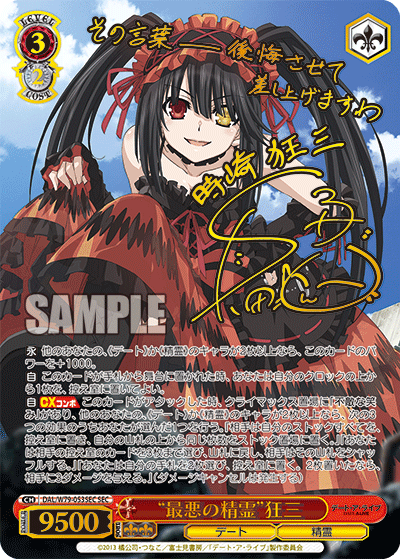
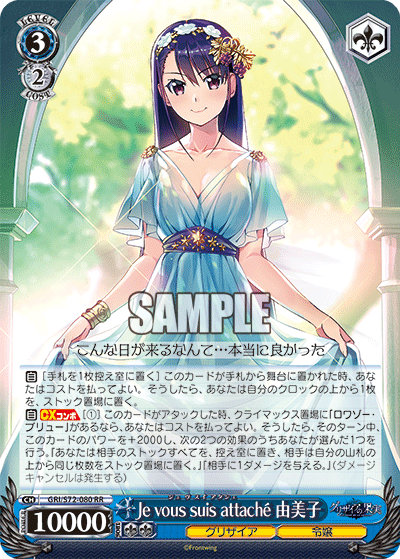
Modality is very strong in this game. Weiss is a game about taking risks and being able to play around situations. Modality provides the players with options and opportunities to make decisions. Are the current modular options good for the game? Only time can really tell. The biggest difference between old modular cards and that of modern cards lies with the extra focus on resource generation. Resource is just about everything in this game. You need resources to play cards and pay costs. Even if the finishing ability may be dampened (I doubt it given how Bushiroad powercreeps cards), the extra resources generated from these new modular combos can lead to more opportunities down the road in later turns.
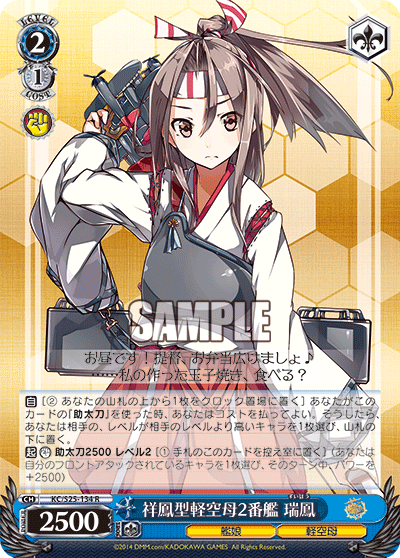


P4/S08-067C 署内一の頭脳派 足立 (center)
PRD/W100-086R 絆を信じて ラビリスタ (right)
What is my final take on this? Comparatively to the meta in the past year, I’d say the introduction of these modular finishers or early-play resource generating cards are a breath of fresh air comparatively to the meta before full of field bullies and hyper end-game focus. Given that these profiles are made for the mid-game, this gives far more opportunity for opposing players to respond to compared to say, Alice. I am fairly sure that this new direction will likely come with its own complications. We’ll just have to see in time.
However, one thing I am sure of is that with the rise of these designs, players may be considering looking into interactive pieces such as the examples shown above. Level two will likely be a very contested space as players will compete to keep their early-plays on board. Who knows? This might even give rise to the return of backups to fight for field supremacy.